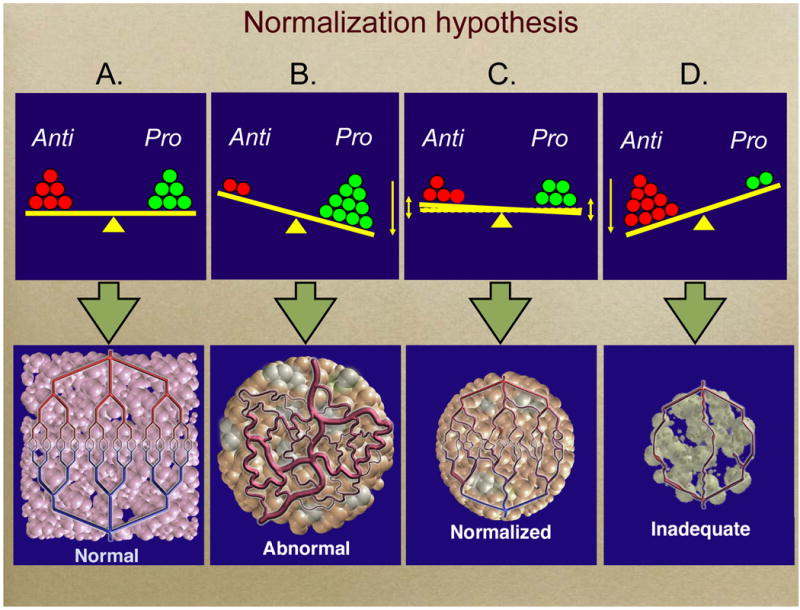Figure 1. Normalization hypothesis.

(A) (top and bottom) In normal tissue the effect of pro-angiogenic molecules (e.g., VEGF, bFGF, IL-8) is balanced by that of anti-angiogenic moelcules (e.g., thrombospondin 1, 2). Therefore blood vessels in normal tissues have normal structure and function. (B) When this balance tips in favor of pro-angiogenic molecules, the resulting vessels are abnormal structurally and functionally, often leading to hypoxia. More than 70 diseases are characterized by abnormal vasculature, e.g., cancer, atherosclerosis, and macular degeneration. (C) Our hypothesis is that judicious administration of effective antiangiogenic agents can “normalize” abnormal vessels and make them less leaky and resembling normal vasculature. (D) Higher doses of potent antiangiogenic agents may be able to completely destroy these abnormal vessels, but they may also harm the vasculature of some normal tissues. This “Janus” effect is one reason we propose to use lower doses of antiangiogenic agents rather higher doses that can flat-out inhibit angiogenesis. (From Jain RK (2005) Normalization of tumor vasculature: an emerging concept in antiangiogenic therapy.
